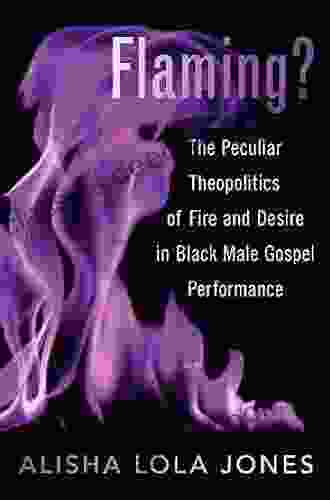Combating Misconceptions and Errors in Physics and Mathematics: Unveiling the Roots and Crafting Effective Learning Strategies

Abstract
Physics and mathematics, two fundamental pillars of scientific inquiry, are often met with challenges as students grapple with complex concepts. Misconceptions and errors, deeply ingrained beliefs or mistakes that hinder understanding, can pose significant roadblocks in these disciplines. This article delves into the origins of such misconceptions and errors, their impact on learning, and explores effective strategies to address them. By shedding light on these cognitive obstacles, educators can empower students to overcome them, fostering a deeper comprehension of these subjects.
4.4 out of 5
| Language | : | English |
| File size | : | 26194 KB |
| Text-to-Speech | : | Enabled |
| Enhanced typesetting | : | Enabled |
| Word Wise | : | Enabled |
| Print length | : | 227 pages |
| Screen Reader | : | Supported |
Physics and mathematics, the languages of science and technology, play a vital role in shaping our understanding of the natural world and solving real-world problems. However, the complexities inherent in these disciplines can give rise to misconceptions and errors, which can obstruct students' learning journeys. These misconceptions stem from various cognitive factors, such as students' prior knowledge, everyday experiences, and the way concepts are presented.
Unraveling the roots of misconceptions and errors is crucial for developing effective teaching strategies. Misconceptions often arise from students' attempts to make sense of new information by drawing upon their existing knowledge. These preconceived notions, while sometimes logical, may not align with scientific principles. For example, students may initially believe that heavier objects fall faster than lighter ones, a misconception rooted in everyday observations rather than the scientific principle of constant acceleration due to gravity.
Common Misconceptions and Errors
Physics:
- Misconception: Heavier objects fall faster than lighter objects.
- Misconception: Objects continue moving unless a force stops them (Newton's first law).
- Error: Confusing speed and velocity (scalar vs. vector quantity).
Mathematics:
- Misconception: Dividing by zero equals zero.
- Misconception: The order of multiplication and addition does not matter.
- Error: Incorrect application of the distributive property.
Impact of Misconceptions and Errors
Misconceptions and errors can have a detrimental impact on students' learning. They can hinder the acquisition of new knowledge, distort their understanding of concepts, and lead to incorrect s. Students may struggle to grasp subsequent lessons that build upon these flawed foundations, creating a ripple effect throughout their educational journey. Furthermore, these misconceptions can persist even after instruction, making it essential to address them explicitly.
Overcoming Misconceptions and Errors
Combating misconceptions and errors requires a multifaceted approach that involves:
- Identifying Misconceptions: Through diagnostic assessments, observation, and discussions, teachers can pinpoint specific misconceptions held by students.
- Challenging Misconceptions: Instead of simply stating the correct information, teachers should engage students in activities that challenge their existing beliefs. Demonstrations, experiments, and thought experiments can provide compelling evidence that contradicts misconceptions.
- Building Conceptual Understanding: Once misconceptions are addressed, teachers should focus on fostering a deep understanding of the underlying concepts. This involves connecting new knowledge to prior knowledge, providing multiple representations of ideas, and encouraging students to make connections between different concepts.
- Practice and Feedback: Ample opportunities for practice, coupled with timely and specific feedback, are essential for reinforcing correct understanding. Students should engage in problem-solving, simulations, and other activities that allow them to apply and refine their knowledge.
- Metacognition: Encouraging students to reflect on their own thinking processes can help them identify and correct errors. Teachers can facilitate metacognitive activities, such as having students explain their reasoning or identify alternative approaches to solving problems.
Misconceptions and errors are inherent challenges in the teaching and learning of physics and mathematics. By understanding their origins, educators can develop effective strategies to address these obstacles. Through a combination of misconception identification, conceptual understanding, practice, feedback, and metacognition, we can empower students to overcome these barriers and cultivate a solid foundation in these critical disciplines. This endeavor not only enhances students' academic performance but also fosters their critical thinking skills and prepares them for success in future scientific and mathematical pursuits.
4.4 out of 5
| Language | : | English |
| File size | : | 26194 KB |
| Text-to-Speech | : | Enabled |
| Enhanced typesetting | : | Enabled |
| Word Wise | : | Enabled |
| Print length | : | 227 pages |
| Screen Reader | : | Supported |
Do you want to contribute by writing guest posts on this blog?
Please contact us and send us a resume of previous articles that you have written.
 Book
Book Novel
Novel Page
Page Story
Story Reader
Reader E-book
E-book Magazine
Magazine Newspaper
Newspaper Sentence
Sentence Bookmark
Bookmark Glossary
Glossary Bibliography
Bibliography Foreword
Foreword Annotation
Annotation Footnote
Footnote Manuscript
Manuscript Scroll
Scroll Tome
Tome Bestseller
Bestseller Narrative
Narrative Biography
Biography Encyclopedia
Encyclopedia Dictionary
Dictionary Thesaurus
Thesaurus Narrator
Narrator Character
Character Study
Study Research
Research Scholarly
Scholarly Lending
Lending Journals
Journals Reading Room
Reading Room Special Collections
Special Collections Interlibrary
Interlibrary Literacy
Literacy Study Group
Study Group Thesis
Thesis Dissertation
Dissertation Theory
Theory Textbooks
Textbooks Heather Gautney
Heather Gautney Michael H Roffer
Michael H Roffer Gopal K Kanji
Gopal K Kanji Bob Caporale
Bob Caporale Emily Liebert
Emily Liebert Rimma Mykhailovska
Rimma Mykhailovska Deborah Swift
Deborah Swift Mary Doria Russell
Mary Doria Russell Alisha Lola Jones
Alisha Lola Jones John Pilger
John Pilger Sweta Srivastava Vikram
Sweta Srivastava Vikram Natasha Lester
Natasha Lester Sylvia Wrigley
Sylvia Wrigley Daniel O Donnell
Daniel O Donnell Leon Trotsky
Leon Trotsky Robert Byrne
Robert Byrne Brian Winston
Brian Winston Bianca Xaviera
Bianca Xaviera Bob Grant
Bob Grant S Alexander Reed
S Alexander Reed
Light bulbAdvertise smarter! Our strategic ad space ensures maximum exposure. Reserve your spot today!

 Nathaniel PowellThe Legacy Epilogue Legacy Pack: A Journey of Triumph, Tribulations, and the...
Nathaniel PowellThe Legacy Epilogue Legacy Pack: A Journey of Triumph, Tribulations, and the...
 Dwayne MitchellHer Heart, His Crown: A Mesmerizing Journey of Love and Redemption by Bianca...
Dwayne MitchellHer Heart, His Crown: A Mesmerizing Journey of Love and Redemption by Bianca... Nathaniel HawthorneFollow ·10.5k
Nathaniel HawthorneFollow ·10.5k James JoyceFollow ·14.5k
James JoyceFollow ·14.5k Nick TurnerFollow ·13.8k
Nick TurnerFollow ·13.8k Shawn ReedFollow ·7.6k
Shawn ReedFollow ·7.6k H.G. WellsFollow ·16.7k
H.G. WellsFollow ·16.7k Clark BellFollow ·8.7k
Clark BellFollow ·8.7k Rob FosterFollow ·7.3k
Rob FosterFollow ·7.3k Leon FosterFollow ·16.5k
Leon FosterFollow ·16.5k
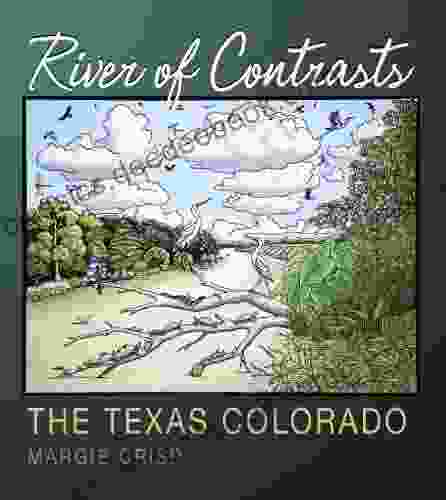
 Earl Williams
Earl WilliamsThe Texas Colorado River: A Vital Resource for Central...
The Texas Colorado River is an...
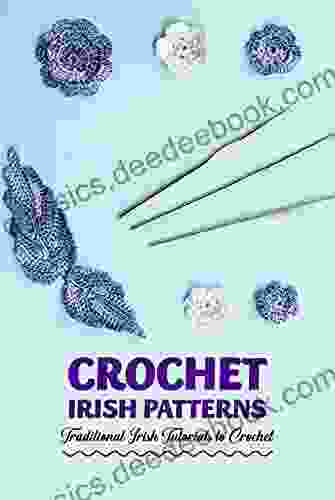
 Robert Heinlein
Robert HeinleinCrochet Irish Projects For Beginners: A Comprehensive...
Crochet Irish lace, with its intricate...
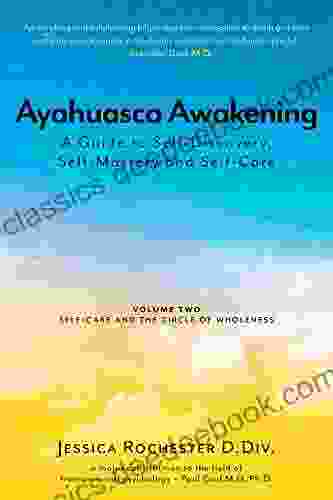
 Mason Powell
Mason PowellAyahuasca Awakening: A Comprehensive Guide to...
Ayahuasca is a...

 Glenn Hayes
Glenn HayesPrice Forecasting Models for Dawson Geophysical Company...
In the realm of financial...
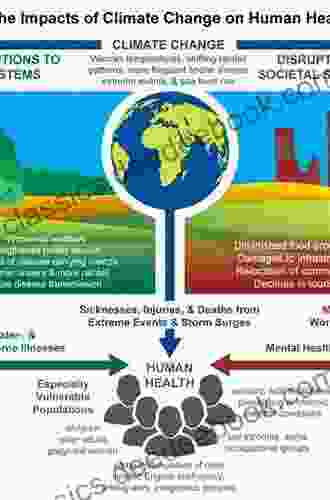
 Emanuel Bell
Emanuel BellStressors in the Marine Environment: A Comprehensive...
The marine environment is facing a...
4.4 out of 5
| Language | : | English |
| File size | : | 26194 KB |
| Text-to-Speech | : | Enabled |
| Enhanced typesetting | : | Enabled |
| Word Wise | : | Enabled |
| Print length | : | 227 pages |
| Screen Reader | : | Supported |









